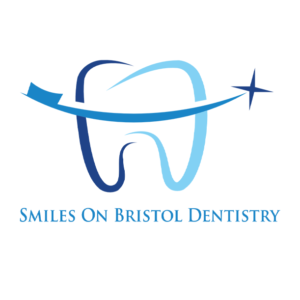The dentists at Smiles On Bristol Dentistry in Santa Ana, Ca, have a few tips for anyone considering wisdom tooth extractions. The removal of the wisdom teeth is a very common dental procedure. Like any surgery, it can have its risks, but in the hands of a well-trained professional, everything should go smoothly.
Wisdom teeth develop roots and begin to emerge during the late teen years and early twenties. They are the third set of molars in the human mouth. When our early, early ancestors were eating raw meat and crunching up tough plants, nuts, and seeds, this third set of molars helped them chew the tougher food. Additionally, dental care was nonexistent and losing teeth was a fairly common occurrence. The arrival of the wisdom teeth later in life would help to replace missing teeth so early humans could continue eating.
In modern times, however, food is easily chewed and we deal with the loss of teeth much more directly. Dental care is now the norm, making the loss of teeth a rarity rather than a daily hazard. With the jaw still full of teeth, wisdom teeth these days can causing crowding of the other teeth or, worse, not have enough room to fully erupt and get stuck within the gums. When wisdom teeth get stuck, they are called impacted and can become infected, cause pain, and create periodontal disease in the area.
Some people naturally have jaws with enough space for their wisdom teeth, or they simply never had them. In these cases good dentists will be able to let their patients know that wisdom teeth extraction is not necessary. The dentists at Smiles on Bristol Dentistry’s Santa Ana office recommend patients have their wisdom teeth removed before the roots have developed two-thirds of the way. At this stage, the teeth are much easier to remove because the teeth are in the best placement for extraction, unblocked by other teeth, and the root is weak enough to be pulled out with the least risk of damage.
Many patients do not need their wisdom teeth removed precisely at that time and being able to tell exactly if wisdom teeth will be a problem or not is hard to tell, but the later patients have their teeth removed, the more chance of complications there will be. This is because the wisdom teeth can move and crowd the other teeth around them. Should their roots be too close, dentists have to be extra careful to remove the unwanted wisdom tooth without damaging the nearby permanent tooth. The roots will continue to harden making extracting the tooth more difficult and usually create longer recovering times for the patient. Additionally persons aged 30 to 40 usually have longer recovery times than younger patients.
Many dentists recommend their patients to an oral surgeon to have their wisdom teeth removed. This is because wisdom tooth extraction tends to be more complex than general extractions and is considered a surgical procedure.
Oral surgeons will generally offer two anesthesia options to their patients. All patients will receive local anesthesia to the extraction sites, but patients can also choose between laughing gas and general anesthesia.
Laughing gas has the benefits of removing the possible complications of general anesthesia. It is well tolerated by most people and can help relieve stress and anxiety about the procedure. Extractions done with laughing gas also tend to be cheaper than those done with general anesthesia. The downside to laughing gas, however, is that the patient it awake for the entire procedure. This adds a bit of extra trouble for the performing surgeon, as awake patients will be more prone to fidgeting and unexpected movements. Patients are also fully aware of the pressure, vibrations, sounds, and sights that accompany the extraction.
For patients that want to simply go to sleep and wake up when the procedure is all done, they have the option of general anesthesia. Usually distributed through the body with an IV, general anesthesia puts the patient in a sleep-like state that lasts until the IV is removed. The patient usually wakes up groggy and will need someone to drive them home as the anesthesia will take a while to fully leave the body. The dentists in Santa Ana at Smiles on Bristol Dentistry suggest patients have someone assist them the rest of the day after surgery to make sure they remember all post-op procedures and take their medicine as prescribed.
All patients will receive a multiday dose of antibiotics to protect the extraction sites from infection. Most patients will also receive strong pain killers to help them ease any pain while they heal after surgery. Oral surgeons will discuss with their patients beforehand their recommended dosage of both painkillers and antibiotics depending upon how invasive an extraction is required. After the initial dose of prescription painkillers, dentists recommend patients who still have pain use the over-the-counter pain medications ibuprofen and Tylenol.
Most people experience facial swelling but it usually subsides within a week. The Santa Ana dentists advise patients with swelling to keep their heads elevated and to apply ice packs to the area to help soothe the inflammation.
After surgery, patients also need to be careful about what they eat. For the first couple of days, soft foods like ice cream, smoothies, and yogurt are recommended. Avoid using a straw, as the sucking can damage the fragile healing sites. For the five days following surgery, solid foods can be reintroduced, but they should continue to be soft such as scrambled eggs, mashed potatoes, apple sauce, pasta, etc. After that, patients can continue introducing more foods back into their diet but should be careful and go slow! Until the extraction areas are healed, patients should try to limit their chewing as much as possible.


